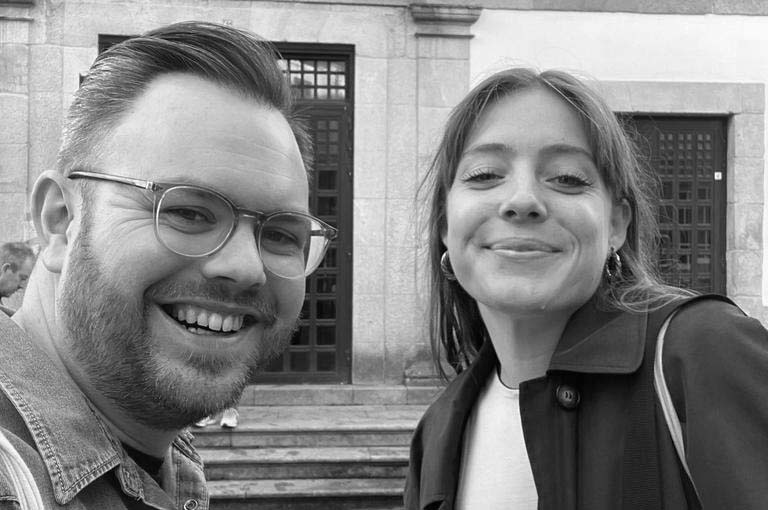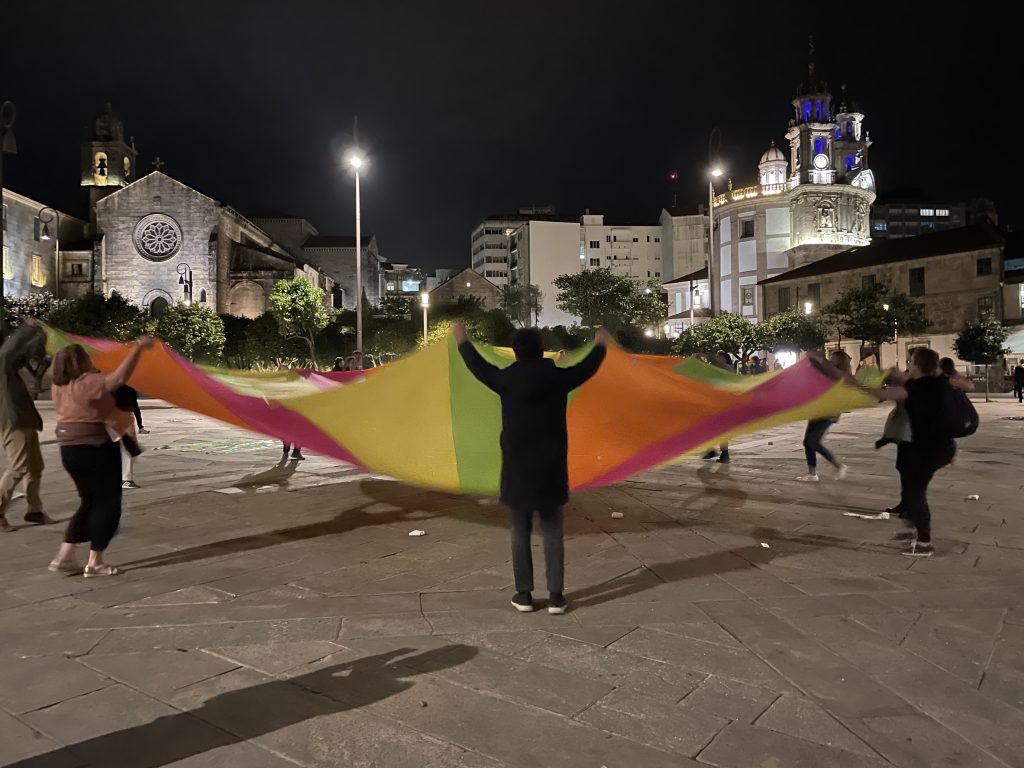The final week of September saw the town of Pontevedra in Spain come alive with Placemaking Week Europe, billed as ‘Europe’s largest placemaking festival’. Shane Quinn and Connie Dales had the joy of attending in the Academy’s name having met the city’s Mayor, Miguel Anxo Fernández Lores, and Placemaking Europe Director, Ramon Marrades, at Congress in Belfast earlier this year.
 What was immediately clear about the week was its ability to bring together some of the most enthusiastic, high-spirited people in the international placemaking field. Hundreds of urbanists spanning ages, career stages, and continents came together to inspire one another. The buzz was palpable.
What was immediately clear about the week was its ability to bring together some of the most enthusiastic, high-spirited people in the international placemaking field. Hundreds of urbanists spanning ages, career stages, and continents came together to inspire one another. The buzz was palpable.
Pontevedra embraced its moment on the international urbanism stage. It is a town with a compelling story, home to 85,000 people on the Galician coast, its old town core was effectively pedestrianised in 1999 by Mayor Fernández Lores. The benefits he advocated were widely dismissed at the time. Now, residents recognise how the move was about delivering a city focused on the quality of life of its people. That the Mayor is running for his fifth consecutive term signals how voters have embraced his experiment.
Pontevedra’s walkability and its city government’s encouragement of Placemaking Week worked in tandem to contribute a sense of the event ‘taking over’ the host city, in the best way possible. This was visible in the public squares that hosted keynotes and workshops, as well as games and karaoke. The event programme was pasted on city signs. Senior Council officials attended sessions throughout the week. Notably, bar staff kept asking, “You here for Placemaking Week? We have a live DJ tomorrow night”.
”All the events I do are love letters to their place“
–
Several buildings and locations, threaded through the old town, provided the venues. They included the beautifully restored Santa Clara convent, the late 19th Century Teatro Principal, and the contemporary glass-walled Museo de Pontevedra. Perhaps most evocative was the outside event space created for Placemaking Week in the intimate Praza do Teucro, framed by the yellow sandstone that defines the old town.

Placemaking Europe, the organiser of Placemaking Week Europe, is ‘a network of European practitioners promoting place-led development at the human scale.’ Closely aligned with Project for Public Spaces, founded by Fred Kent, it traces its beginnings to the PPS-organised Placemaking Week 2017 in Amsterdam, followed by the 2018 ‘Cities for All’ conference in Stockholm, organised by Stipo, a Dutch urban consultancy. Placemaking Week Europe is now one of several Placemaking Weeks organised by regional networks from India to Latin America and Japan to the United States.
Beneath a core theme of ‘Creating Better Cities Together,’ four programmatic themes shaped the week’s sessions this year:
- Green & Blue Placemaking
- Creative Bureaucracy
- Human Scale Development for Thriving & Resilient Places
- Innovative & Creative Economy.
Running across four days, the programme was packed with keynotes, workshops, and panels. There was so much packed in that we sometimes felt overwhelmed. Notable speakers included Marion Waller, Advisor to the Mayor of Paris, and Carlos Moreno, the academic behind the 15-Minute City concept. But there was just as much value from less well-known names, including Carmen Mays from Birmingham, Alabama, who told us, “There is a history to every space, and understanding that is key to not misfiring…All the events I do are love letters to their place.” Or Jorn Wemmenhove, from Humankind City, declaring, “we’ve undervalued the power of imagination for too long”.
Part of the Placemaking Week approach is an open call to showcase projects. It brought a mix of major international or city-scope projects and neighbourhood-scale initiatives to the event. David Partridge of Related Argent talked about the Kings Cross redevelopment approach that saw quality public realm as the seed investment in buildings: “we couldn’t afford to build a building, but we could afford to build public space.”
Lauren Kovács spoke about the EU-funded transnational DANURB+ project. Spanning six countries, it aims to “reactivate underused cultural heritage and resources in shrinking settlements of the Danube river’s peripheral and border regions, creating new possibilities to make its towns and regions attractive again”.
On smaller projects, Patrick Bernard, the founder of La République des Hyper Voisins, spoke movingly about working to improve Paris by connecting Parisians through a new sense of civic community. In his words, “conviviality is an economic asset.”
A common theme throughout the week built on one from our own AoU Congress in Belfast back in June around the importance of collaborative cross-sectoral work. Several speakers discussed reimagining the “orgware” needed for placemaking. If infrastructure is the hardware, and people-led activity is the software of our places, the bureaucratic systems that support how these two work together (or not) is the orgware. Robin Abad, San Francisco’s Director of Shared Spaces, talked about orgware in terms of partnership work while also emphasising that it’s vital because “the outcomes of our work are about more than making places where people feel comfortable. It’s about peoples’ health, skills, and our places’ economies.”

The aim of all the many projects we saw was best summed up by Ewa Sheifes from a cultural-community project in Amsterdam; it’s about “places you can go versus places you are welcome”.






